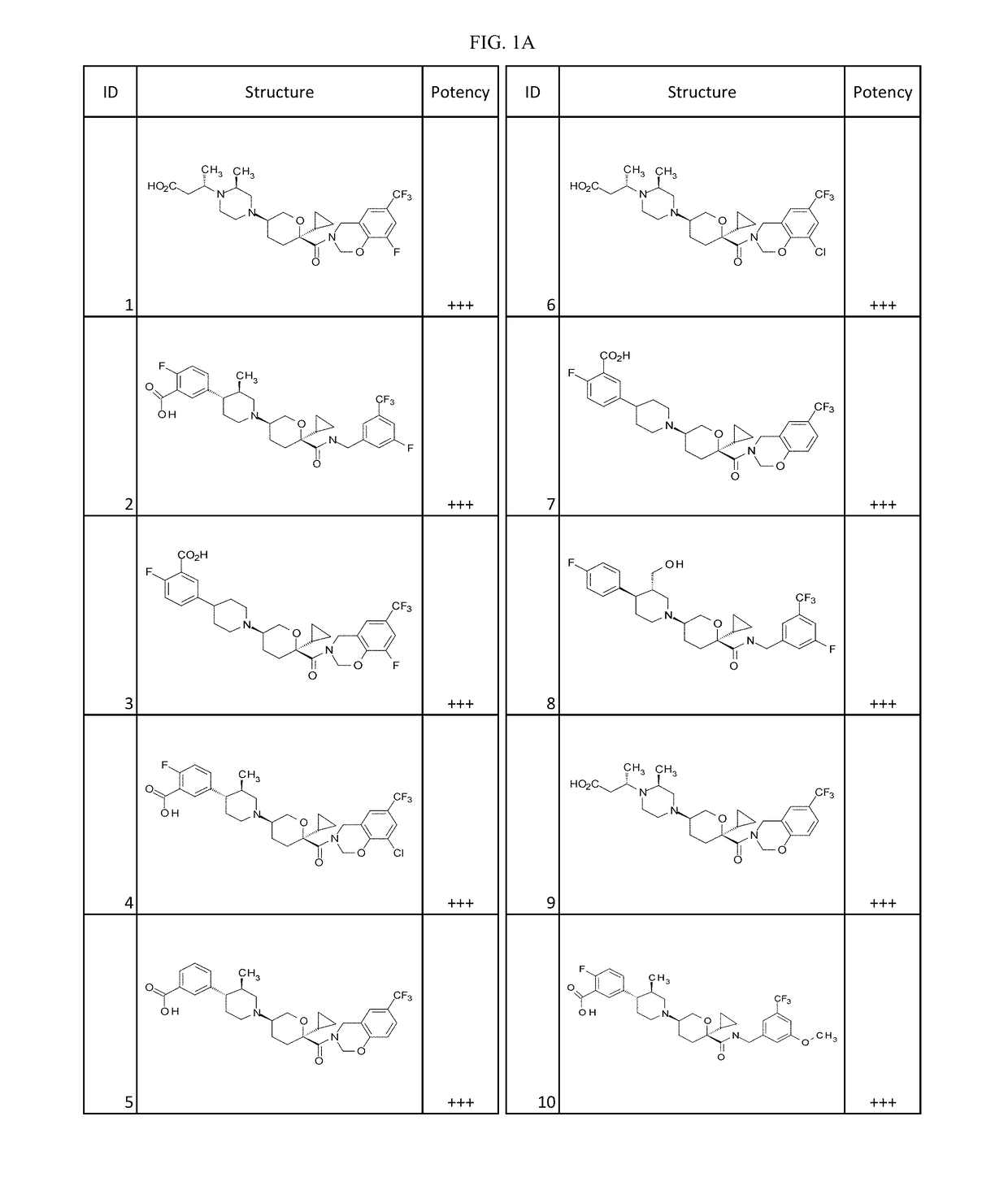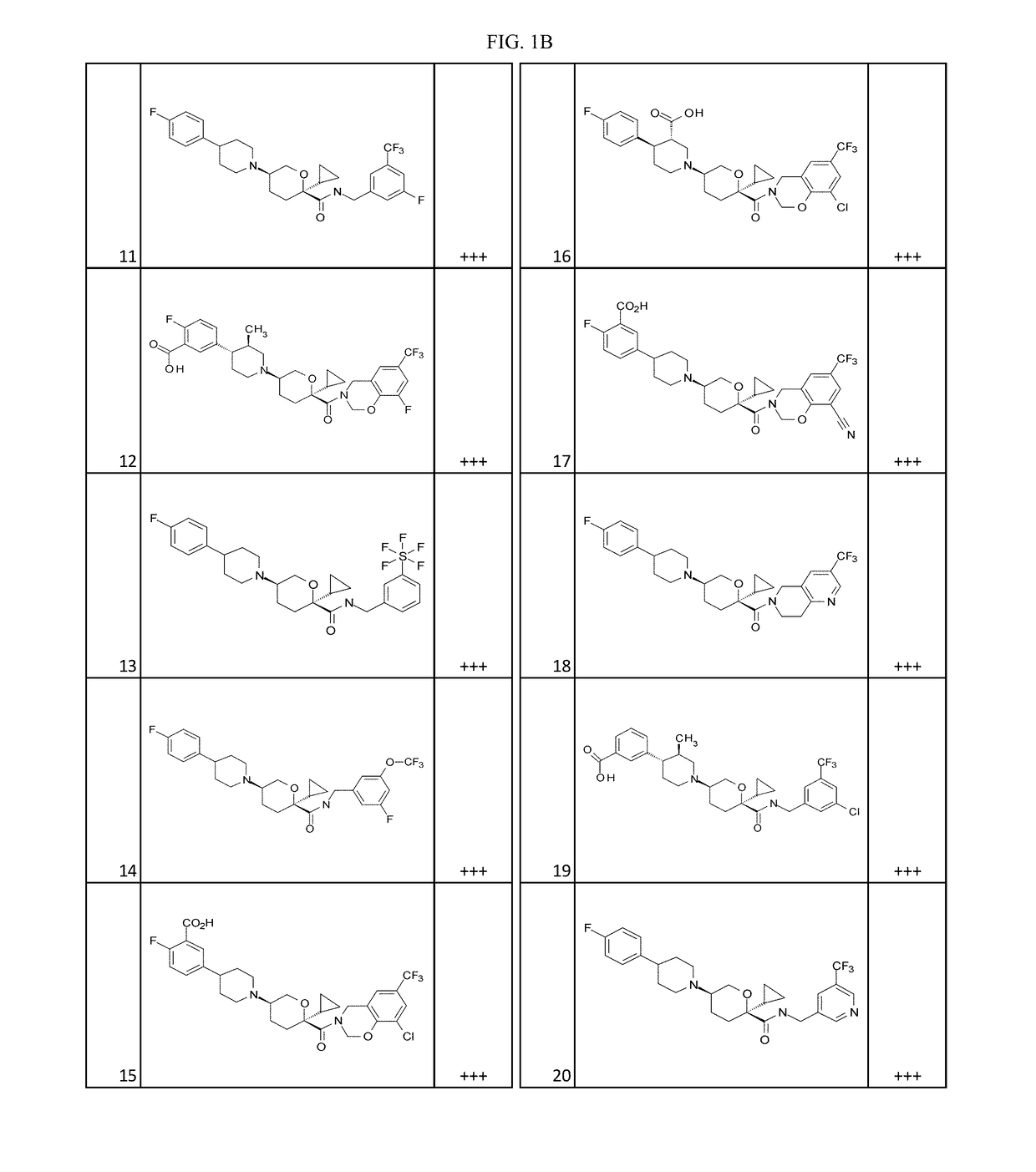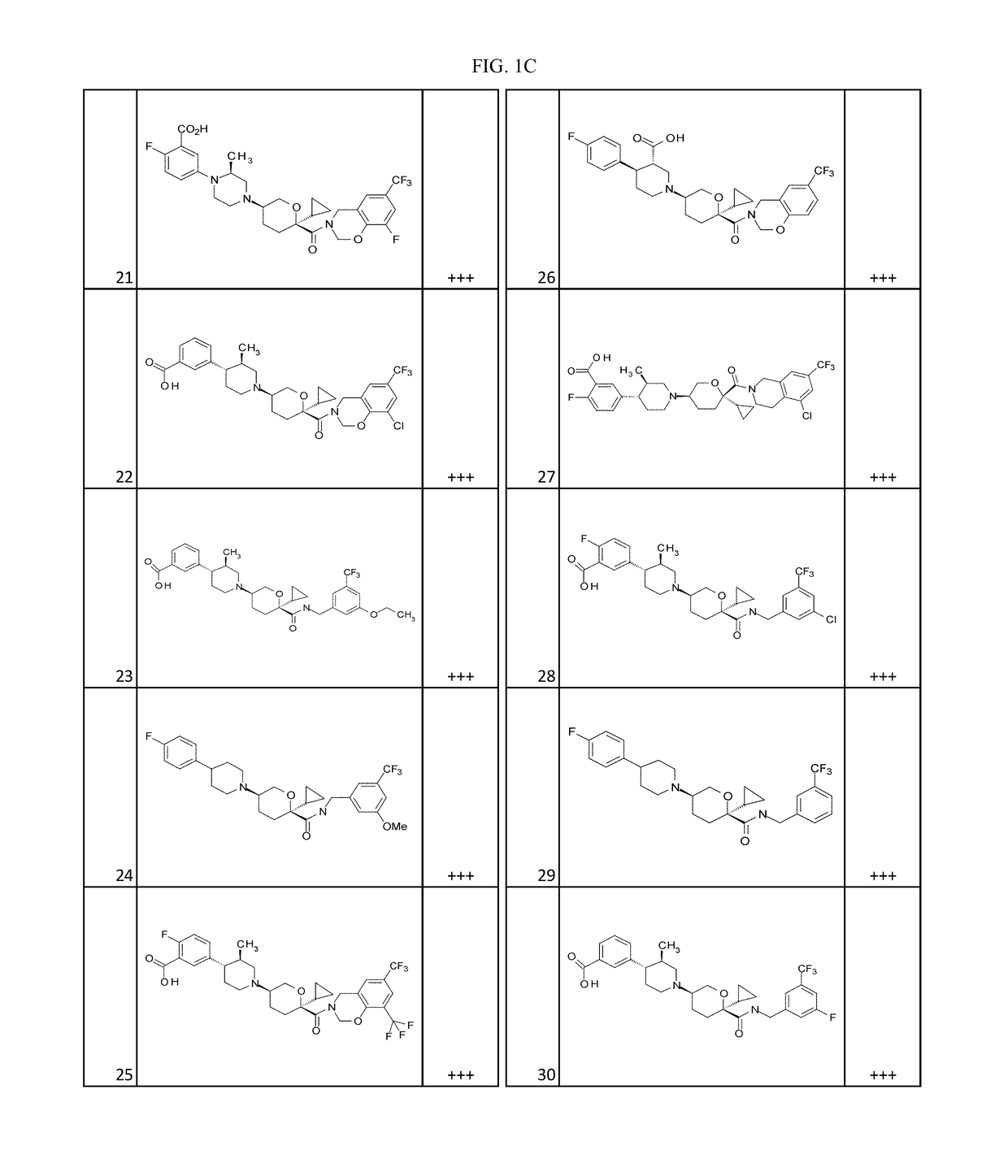Substituted tetrahydropyrans as CCR2 modulators
a technology of ccr2 and tetrahydropyran, which is applied in the field of substituting tetrahydropyran as ccr2 modulator, can solve the problems of reducing food intake and attenuating the development of obesity in mice, and achieve the effect of modulating chemokine function
- Summary
- Abstract
- Description
- Claims
- Application Information
AI Technical Summary
Benefits of technology
Problems solved by technology
Method used
Image
Examples
example 1
Synthesis of [(2S,5S)-5-[4-(4-fluorophenyl)-1-piperidyl]-2-methyl-tetrahydropyran-2-yl]-[3-(trifluoromethyl)-7,8-dihydro-5H-1,6-naphthyridin-6-yl]methanone and [(2R,5R)-5-[4-(4-fluorophenyl)-1-piperidyl]-2-methyl-tetrahydropyran-2-yl]-[3-(trifluoromethyl)-7,8-dihydro-5H-1,6-naphthyridin-6-yl]methanone
[0190]
[0191]Step a: A microwave vial was charged with freshly distilled acrolein (40.0 g, 48.0 mL, 710 mmol) and hydroquinone (50 mg). The mixture was heated for 70 min at 140° C., then for 30 min at 150° C. Afterwards, the contents of the vial were filtered, washed with CH2Cl2 and concentrated under reduced pressure. The resulting 3,4-dihydro-2H-pyran-2-carboxaldehyde (20.0 g, 50%) was pure enough to be immediately used in the next step.
[0192]Step b: A solution of AgNO3 (65 g, 383 mmol) in water (400 mL) was added to a stirred solution of 3,4-dihydro-2H-pyran-2-carbaldehyde (13 g, 116 mmol) in ethanol (300 mL), followed by the slow addition of a solution of KOH (43 g, 766 mmol) in wate...
example 2
Synthesis of 5-[1-[(3R,6S)-6-cyclopropyl-6-[[3-fluoro-5-(trifluoromethyl)phenyl]methylcarbamoyl]tetrahydropyran-3-yl]-4-piperidyl]-2-fluorobenzoic acid
[0212]
[0213]Step a: To a mixture of the (2S)-2-cycloproyl-3,4-dihydro-2H-2-carboxylic acid (730 mg, 4.3 mmol), 3-fluoro-5-trfluoromethyl-benzylamine (1.0 g, 5.2 mmol), diethylisopropyl amine (650 mg, 5 mmol) in DMF (10 mL) was added HATU (2.2 g, 5.8 mmol). The resulting solution was stirred at room temperature for 3 h. The reaction mixture was quenched with water, extracted with ethyl acetate and washed with brine. The organic layer was concentrated in vacuo and the residue purified by flash chromatography (2 to 25% ethyl acetate in hexane as eluent) to give 1.2 g of (2S)-2-cyclopropyl-N-(3-fluoro-5-(trifluoromethyl)benzyl)-3,4-dihydro-2H-pyran-2-carboxamide (84% yield) as a light yellow syrup and was used directly in the next step. MS: (ES) m / z calculated for C17H18F4NO2 [M+H]+ 344.1, found 344.1.
[0214]Step b: The amide prepared abov...
example 3
Synthesis of 3-[(3S,4R)-1-[(3R,6S)-6-cyclopropyl-6-[[3-fluoro-5-(trifluoromethyl)phenyl]methylcarbamoyl]tetrahydropyran-3-yl]-3-methyl-4-piperidyl]benzoic acid and 3-[(3R,4S)-1-[(3R,6S)-6-cyclopropyl-6-[[3-fluoro-5-(trifluoromethyl)phenyl]methylcarbamoyl]tetrahydropyran-3-yl]-3-methyl-4-piperidyl]benzoic acid
[0217]
[0218]Step a: To a mixture of 3-(ethoxycarbonyl)phenylboronic acid (4.0 g, 20.6 mmol), tert-butyl 4-(trifluoromethylsulfonyloxy)-5,6-dihydropyridine-1(2H)-carboxylate (4.0 g, 12 mmol), K2CO3 (4.2 g, 30 mmol), and LiCl (4.3 g, 100 mmol) in p-dioxane (75 mL) and water (15 mL) was added Pd(PPh3)4 (600 mg, 0.5 mmol). The resulting mixture was purged with N2 and then heated to 100° C. under N2 for 3 h. After cooling to room temperature, the mixture was diluted with EtOAc and washed with brine. The organic layer was concentrated in vacuo and the residue was purified by flash chromatography (2 to 25% ethyl acetate in hexane as eluent) to give 2.4 g of tert-butyl 4-(3-(ethoxycarbo...
PUM
| Property | Measurement | Unit |
|---|---|---|
| temperature | aaaaa | aaaaa |
| temperature | aaaaa | aaaaa |
| temperature | aaaaa | aaaaa |
Abstract
Description
Claims
Application Information
 Login to View More
Login to View More - R&D
- Intellectual Property
- Life Sciences
- Materials
- Tech Scout
- Unparalleled Data Quality
- Higher Quality Content
- 60% Fewer Hallucinations
Browse by: Latest US Patents, China's latest patents, Technical Efficacy Thesaurus, Application Domain, Technology Topic, Popular Technical Reports.
© 2025 PatSnap. All rights reserved.Legal|Privacy policy|Modern Slavery Act Transparency Statement|Sitemap|About US| Contact US: help@patsnap.com



